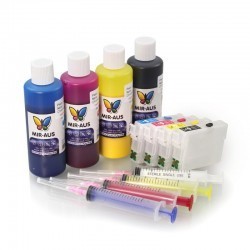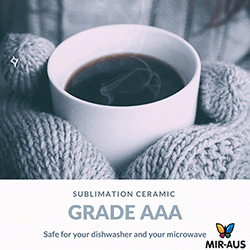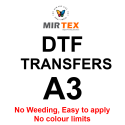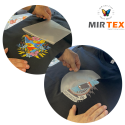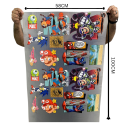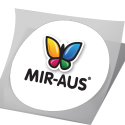
DTF Printing
1. What is DTF printing?
DTF printing, short for Direct-to-Film printing, is a modern digital printing method where designs are printed onto a special film using a printer and then transferred onto various materials using a heat press.
2. What materials can be used for DTF printing?
DTF printing can be applied to various materials, including cotton, polyester, nylon, leather, blends, and more.
3. How does DTF printing work?
In DTF printing, a design is first printed onto a heat-sensitive adhesive film using a compatible printer. The printed film is then placed onto the target material, and heat and pressure are applied using a heat press. This process allows the design to transfer from the film onto the material, creating vibrant and durable prints.
4. What are the advantages of DTF printing?
- Versatility: DTF printing can be applied to various materials, offering flexibility for different applications.
- Vibrant Colors: DTF printing produces high-quality, vibrant prints with excellent colour reproduction.
- Durability: DTF prints are known for their durability and wash resistance.
- Detailed Designs: DTF printing allows for intricate and detailed designs to be reproduced accurately.
5. Is DTF printing environmentally friendly?
DTF printing typically utilizes eco-friendly, water-based inks, making it a more sustainable printing option compared to some traditional methods. However, it's essential to consider proper waste disposal and recycling practices.
6. Can DTF prints be washed?
Yes, DTF prints are washable. For optimal care of garments with DTF transfers, it's recommended to launder them inside out using a gentle cycle and cold water. Steer clear of bleach or fabric softeners. When drying, air dry the garments inside out. If you opt for a tumble dryer, use low heat settings to preserve the quality of the transfers.
7. What equipment is needed for DTF printing?
To perform DTF printing, you'll need a compatible printer, DTF film, heat-sensitive adhesive powder, a heat press, and appropriate software for designing and printing.
8. Can DTF printing be used for custom designs and small batches?
Yes, one of the advantages of DTF printing is its suitability for custom designs and small-batch production. It allows for the cost-effective printing of personalized items without the need for large order quantities.
9. How do I get started with DTF printing?
To get started with DTF printing, you'll need to invest in the necessary equipment, such as a DTF printer and heat press, and familiarize yourself with the printing process.
10. Where can I purchase DTF printing supplies?
DTF printing supplies, including printers, films, and adhesive powders, can be purchased from our website.
https://continuousinksupplysystem.com.au/en/379-dtf
11. How should DTF printing materials be stored at room temperature?
DTF film and heat-sensitive adhesive powder should be stored in a cool, dry place at room temperature, away from direct sunlight and moisture. Proper storage at room temperature helps maintain the materials' quality and effectiveness.
12. What equipment is required for custom DTF printing?
In addition to your custom DTF prints, you will need a pair of scissors to cut out your designs and a heat press to transfer the prints onto various materials.
13. What is your turnaround time for custom DTF prints?
We offer same-day turnaround for orders placed before 11 AM.
14. What is the minimum order quantity for custom DTF prints?
For the gang sheet orders, there is no minimum order quantity.
- A4-min. 4
- A3 size – min.4
- Pocket size -min.6
15. what are the file requirements for the best quality prints?
Ensure your artwork is 300dpi, CMYK, without a background unless you like it with a background, min. The line size is 6 pixels. The template must be in a PNG, PDF, or PS format. Make sure your design has no shadows around it.
16. DTF is not sticking on the garment; what should I do?
- Check Temperature: Ensure that your heat press or curing machine is set to the correct temperature for the DTF process. Different types of DTF films and garments may require different temperatures. Refer to the manufacturer's recommendations for the optimal temperature.
- Check Pressure: Adjust the pressure of your heat press according to the thickness of the garment and the type of DTF film being used. Insufficient pressure can prevent proper adhesion.
- Check Pre-treatment: If using DTF on dark-coloured garments, pre-treatment is often necessary to ensure proper adhesion and vibrancy of colours. Make sure the garment is appropriately pre-treated according to the manufacturer's guidelines.
- Check Adhesive: Check if the adhesive used with the DTF film is appropriate for your garment material. Different fabrics may require different adhesives for optimal adhesion.
- Ensure pressing time: Ensure that the pressing time is sufficient for the DTF ink to adhere to the garment properly. If the ink is not fully cured, it may not stick effectively.
- Check Garment Surface: Ensure the garment's surface is clean and free from any residues or contaminants that could interfere with adhesion. Pre-washing the garment can help remove any residues.
- Peeling Technique: After pressing, allow the garment to cool down before peeling off the film. Improper peeling techniques can affect adhesion.
- Testing: Perform a test run on a scrap piece of fabric or garment before applying DTF to the final product. This allows you to fine-tune your settings and ensure proper adhesion.
Share this content

